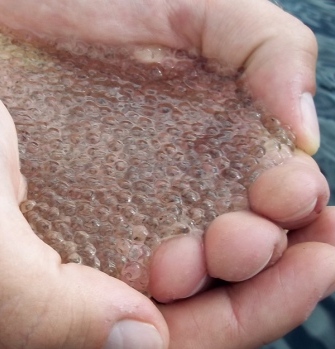Pass the peanut butter: Chemical changes could turn the Great Lakes to jelly
The legacy of decades of industrial pollution affecting North America’s Great Lakes now appears to have taken the form of slimy crustaceans choking the life out of these precious aquatic ecosystems. Known more commonly as water-fleas because of their swimming style, these tiny creatures are less than 0.3 mm in size but represent the foundation of all natural, healthy aquatic ecosystems. They can clear waters of toxic algae and are the staple food supply of many fish species. And this new change in lake water chemistry has led to a boom in the number of another tiny organism that is literally leaving parts of the Great Lakes oozing with slimy jelly. Scientists say this jellification will not only affect stocks of critical fish species but also may very well damage vital filtration systems that are used to provide drinking water to urban centres.
As calcium declines, the increasing concentrations of jelly in the middle of these lakes will reduce energy and nutrient transport right across the food chain.
Andrew Tanentzap, aquatic scientist from the University of Cambridge
The Great Lakes are the largest freshwater bodies in the world and have been a primary source of drinking water and fisheries for generations. However, with industrial development and population growth in the region, human-caused acid pollution has skyrocketed in the lakes over the past hundred years. Increased acidification leads to less calcium carbonate minerals present in the lakes, which are the building blocks of shells and skeletons of tiny crustaceans and mussels, too.
It may take thousands of years to return to historic lake water calcium concentrations solely from natural weathering of surrounding watersheds.
Andrew Tanentzap

Science great lakes